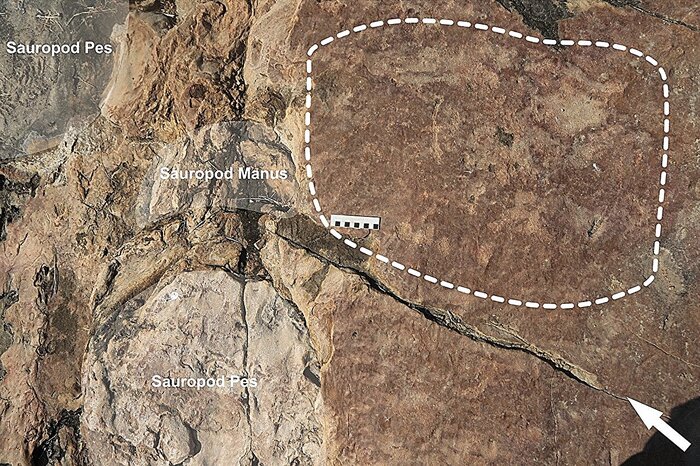- Click to share on Facebook (Opens in a new window)
- Click to share on Twitter (Opens in a new window)
- Click here to share on LinkedIn (Opens in a new window)
- Click to email a friend (Opens in a new window)
(CNN) - A new type of duck-billed dinosaur has been discovered in Japan.
The largest dinosaur skeleton ever found in the country was hiding beneath 72 million-year-old marine deposits in the city of Mukawa, according to Hokkaido University.
First, part of the dinosaur's tail was discovered during a joint excavation conducted by the Hobetsu Museum and the Hokkaido University Museum in 2013.
Later excavations unearthed an almost complete dinosaur skeleton, described in a study published in Scientific Reports. It belongs to a new genus and species of herbivorous hadrosaurid dinosaur, the university said in a press release.
The scientists called the dinosaur "Kamuysaurus japonicus." The name comes from "kamuy", a word in ainu, the language of the indigenous peoples of northern Japan; "Saurus", which means reptile in Latin; and "japonicus" for Japan.
How could the dinosaur have looked when he was alive
A group of researchers led by Yoshitsugu Kobayashi of the Hokkaido University Museum analyzed the bones.
The dinosaur found was probably an adult, according to the histological study of the research team.
It was about 8 meters long and weighed 4 or 5.3 tons, depending on whether it walked on two or four legs, respectively. That is around the weight of an Asian elephant.
The frontal bone of his skull had a long anterior platform for the nasofrontal suture surface, which means that the dinosaur had what some might call a duckbill.
The team discovered that this dinosaur has three characteristics that are not shared with other biologically similar dinosaurs: the low position of the cranial bone notch, the short ascending process of the jaw bone and the anterior inclination of the neural spines from the sixth to the twelfth. dorsal vertebrae
What they learned from this discovery
Scientists are interested in what Kamuysaurus japonicus can tell us about its clade, a taxonomic grouping of organisms with a common ancestor: its branch in the tree of life, so to speak.
The study also provided a better understanding of the origin of this new dinosaur's clade and how it migrated.
The last common ancestors of dinosaurs in the Edmontosaurini clade spread throughout Asia and North America. At that time, they were connected by what is now Alaska, which allowed them to travel back and forth between the two continents.
The group's research also suggests that dinosaur ancestors preferred to inhabit areas near the ocean. The coastal environment may have played an important role in the diversification of hadrosaurids in their evolution.
Dinosaur








